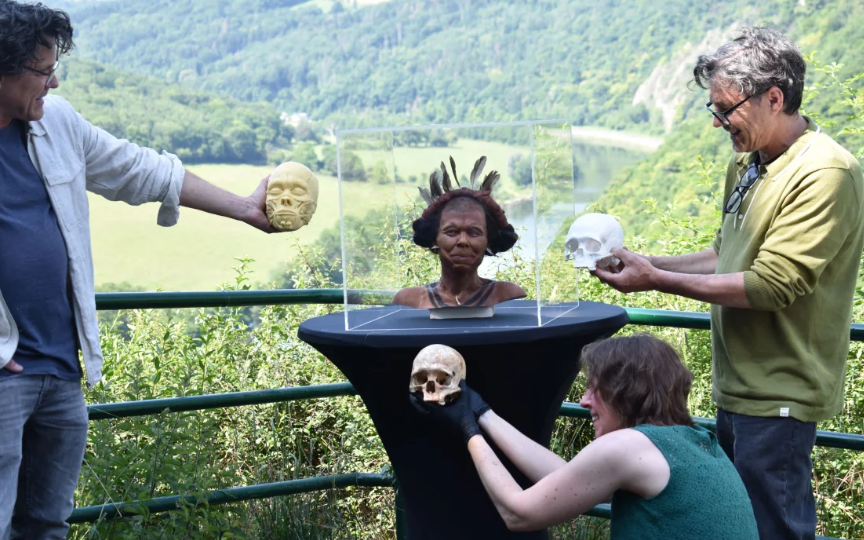Researchers from the University of Ghent in Belgium managed to reconstruct the face of a woman who lived about 10,500 years ago, using genetic material extracted from her bones.
According to a statement by Gent University, the woman had blue eyes and somewhat lighter skin than other Mesolithic people in Western Europe who have been studied to date.
The discovery comes to overthrow the belief that European hunters of the time had a similar genetic composition, pointing out the already existing diversity in skin color.
The leader of the Belgian Mesolithic Research Project, Archaeologist Isabel de Grut, told CNN that the woman came from the same population group as the well -known “Cheddar man” from Britain, but was significantly different.
“From the skull we were also able to find that they were between 35 and 60 years old,” he said. “It also had a high nasal bridge and strong eyebrows, something unusual for a woman,” he added.
The woman’s bones were found in the Margot Cave in Dinand District during excavations in 1988-1989, along with the relics of eight more women-an “unusual” finding, as De Grut notes, as most Mesolithic tombs include men, women and children.
Many of the skeletal relics brought traces of ocher, indicating some kind of ritual while one person brought posthumous cuts to his skull.
Of particular interest is the fact that the cave was used as a landfill for hundreds of years, which testifies that the people of the time, although living nomadic, were steadily moving to specific locations.
Archaeologist Philip Kobe, a member of the research team, said that the woman’s light skin was a little surprise, as most Mesolithic skeletons that have been genetically analyzed in Western Europe are belonging to the same genetic group.
At the same time, he recalled that when the relics were found, ancient DNA analysis was not possible, but modern techniques allowed the use of the material for a detailed reconstruction.
The woman’s image is based on genetic data on the color of the skin, hair and eyes, while elements such as jewelry or potential tattoos were drawn from archaeological finds of the same area.
In an adjacent excavation, scientists have identified stone tools, wildlife bones and fish residues, reinforcing the view that these populations were completely dependent on nature and followed a nomadic way of life.
“We are now looking for family or social relationships between people who were buried together, and we will study their diet background, especially the role that the fish played in their diet,” Crope concluded.
Source :Skai
I am Terrance Carlson, author at News Bulletin 247. I mostly cover technology news and I have been working in this field for a long time. I have a lot of experience and I am highly knowledgeable in this area. I am a very reliable source of information and I always make sure to provide accurate news to my readers.











